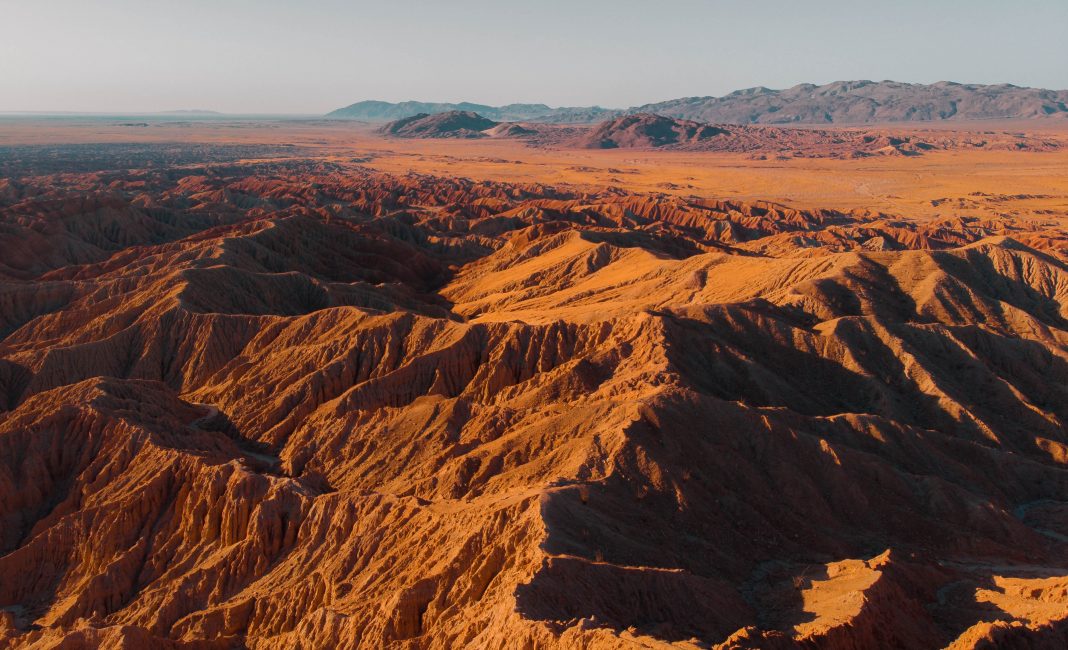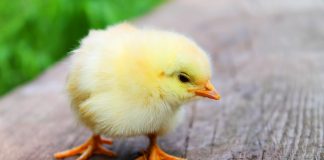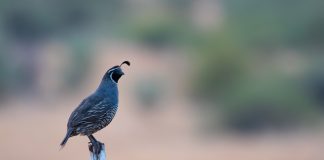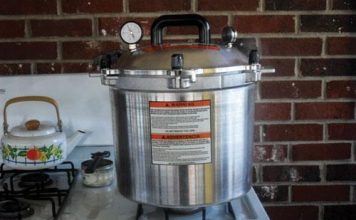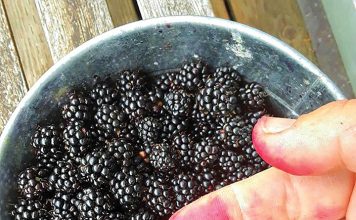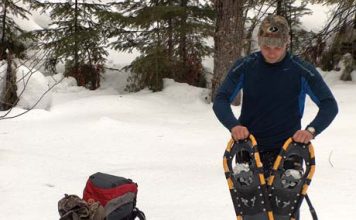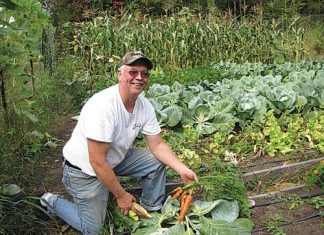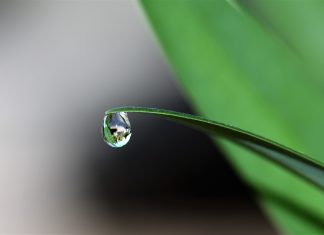| Issue #120 • November/December, 2009 |
Earlier this year, the dogs and I got taxed out of Cabin Sweet Cabin. With a little help from our friends, we packed a small trailer with our dog bowls, our six-gallon superpails of lentils, and even a few clothes. And off we went.
High desert was where we landedbecause that’s where a welcoming mini-community awaited. But oh my goodness, this place is six thousand feet too high and more than 1,000 miles from all I once held dear. Sometimes I’m convinced it’s on another planet.
My idea of “country” is blue-green, dripping woods, tall trees, and earthy scents. Moving from my Pacific Northwest home to the brown, sharp, and pointy desert has required some serious adjustments.
Take altitude, for instance. Do you know the difference between sea level and more than a mile high? Feeling like an 80-year-old with emphysema, that’s what. Never mind the fact that everybody who moves here from a coast goes through it and eventually acclimates. No matter how much pride you take in your physical condition, moving to the high desert from low altitude will definitely humble you.
|
And how about terrain? Last Chance Gulch (what I call this place) is surrounded by miles of wide-open spaces and a surprising variety of wild landscapes. But they’re all…well, desert. And the local frame of reference is…unusual. My neighbors keep talking about the “trees.” I look around and don’t see a tree anywhere, all the way to the horizon. Not one. “You mean those stubby little bushes?” “Yeah. But they’re trees. They’re junipers.” “Oh. Coulda fooled me.”
Still, the vistas are sweeping, and offer their own gaunt sort of beauty. And I never know what new wonders I’ll find around the next corner. Late last summer, when an evening breeze made the temperature reasonable enough for the dogs to slouch out of their tiny patches of shade, I joined one of the human gulchers and a crowd of canines in a walk. My friend offered to show me a field of petrified wood. Then he stepped off the road.
Over a ridge and along a precarious deer-path of shale we went. Into an unexpected canyon swimming-hole went the dogs. We climbed and climbed and climbed some more. (Remember that gasping 80-year-old? Well, that was me.)
But finally…our reward. We emerged on a rock-paved plateau, littered with bits of petrified trees everywhere we looked. There were even trees embedded in thick slabs of sandstonejust to give you an idea how old that landscape is.
“You won’t find this in your precious Northwest,” my friend crowed. “And I’ll bet you never had a canyon in your front yard before, either.”
Then there’s water. Or rather, there isn’t. “Water, water everywhere” is just not a phrase you hear around these parts. You hear about the dangers of dehydration. And the costly depth of wells. And how some lucky so-and-so actually got drinkable water from his drilling (a thing that doesn’t happen often). And whether you should pump your well with solar power or a generator.
Where I used to live, all the water you ever wantedand then somefell from the sky, year-round. Not here. At Last Chance Gulch, the ghastly well water goes to dogs, trees, and dishwashingand leaves lime and rust stains on anything it touches for more than a few minutes. We have two barrels that we trailer into town and fill up for drinking. Then we use a small electric pump to empty the barrels into portable drinking-water containers.
No water, right? But still, they have floods! It’s nuts. Back home, we had water. Here, perpetual drought. But back home a flood was a rare disaster. Here? Well, let me tell you: We have to cross five wide washes to get to town. And I don’t mean on bridges. The washes are part of the local dirt-road system. On the rare occasion it rains, those usually dry washes turnin secondsinto torrents that can sweep away dogs, cows, and pickup trucks. Even after the flood recedes, you don’t go anywhere for 24 hours. Not unless you want to end up axle-deep in mud.
Homegrown power. I have three words for those of you who envision traipsing off to the backwoods (or back-desert) and living free and easy on solar or wind power. Those words are: HA HA HA. Or maybe: “Get a generator.” A big generator. You’re gonna need it.
Okay, it’s true I speak from a somewhat jaundiced perspective. The solar power system at Last Chance Gulch was set up about five years ago by (my friends learned later) a charlatan who would have cheated his own mother on her deathbed. So the system that was supposed to be sufficient to run a small village can barely creak its way through a sunny summer day without the inverter detecting a low-battery state and shutting everything down.
Furthermore, it’s guaranteed that this shut-down will come at the worst possible time. When you’re in the shower, for instance. (The propane water heater goes on working; the pressure tank giving you water says goodbye.) Or when you’re on the wifi network and the satellite Internet connection, meeting some vital Backwoods Home deadline.
At Cabin Sweet Cabin, I had grid power. Yeah, I was spoiled. But you know what? I liked being spoiled.
Now, maybe your solar power works like a charm. If so, I don’t want to hear about it, okay? Because here at Last Chance Gulch, the very mention of functional off-grid power causes blood-pressure to spike and people to run for their Prozac.
We are resolved to have this problem fixed by the time you read this article. It’s a resolve the Last Chance gulchers have made before. But this time we have real expert help. We really do. Our helper this time is somebody with an arm-length list of degrees from MIT. Seriously, after five years with a crippled system, we’re all convinced that’s what it takes to understand off-grid power. Electricity is complicated. And expensive.
|
Then there’s the damn weather. It’s so hot you want to shove a dog out of the only patch of shade, dig a pit in the dirt, and snooze. Thenbazam!It’s so cold you’re slamming windows shut, donning jackets, and stuffing old tee-shirts into cracks in the walls of your trailer. (Everybody here lives in trailers, though several houses are on the drawing board.)
And that’s summer.
Winter? Don’t even mention it. I’ve been here in the winter before. Winter means snow. It means metal trailer doors freezing shut. (You have to unfreeze them with a hair dryerIF the inverter hasn’t shut the electricity down). Winter means valves on blackwater tanks freeze shut. It means that the stuff inside blackwater tanks freezes.
Yeah, like I said, don’t mention winter. My friends from the Pacific Northwest have fantasies about venturing down here in December or January for extended stays. I tell them, “Nooooooo, not really the best idea you’ve ever had.” But they think, “Desert. Sunshine. Warmth. A handy opportunity for snowbirding.” “But it’s more than a mile high,” I tell them. They still look at me with that “70 degrees in winter” gleam in their eyes.
I should let them come. Then they’ll see…
Predators. I knew Toto and I weren’t in Kansas anymore when one of my fellow gulchers came to me and said I should stay armed while he was away on a trip because “the coyotes are funny lately.” He didn’t mean they’ve been practicing comedy routines.
All Last-Chance gulchers go armed, at least with pistols and sometimes with bigger artillery, any time they leave their yards. It’s not something we do for fun, or to make a point about the Second Amendment (although that, too). It’s because at any time we might need to shoot something. Not anything cool like an elk or a mountain lion (though both are certainly around). But a pest, a varmint, a nuisance, or some deadly critter whose attitude is strike first and ask questions later.
We’ve got eight dogs at the gulch now, and most are remarkably good about avoiding the deadliest local varmints. But just a few days ago, the newest dog here stuck her lovely, city-bred snout right into a rattlesnake. And the nearest reachable vet is 45 minutes away. Uh oh. Poor pup had a head like a basketball by the time she got there. She was lucky, though; the snake got only one fang into her and apparently didn’t inject a huge dose of venom. A few antibiotics and steroids and she was fine again (though with maybe a bit of scarring, since rattlesnake venom causes nerve damage).
The truth is that when the gulchers go armed with their dogs, they’re more often defending the dogs than themselves. Dogs raised in the desert are predators too, and sometimes need to be protected from their own poor manners. If a pack of dogs corners an outraged varmint in a pile of gully rocks, you try to get the dogs away with no bloodshed on any side. But sometimes a dog-owner’s choice comes down to killing a poor, innocent critter or rushing a wounded dog to have its gashed muzzle or missing eye sewn up. Dogs are not always sensible creatures. Humans sometimes have to make unpopular choices.
And yet… This column isn’t about “Things I Hate About the High Desert.” I did say I was learning to love it.
And I am. Even some of the very same things you hear me grousing about.
Altitude, for example. The thin atmosphere makes for the most incredible sky. Step out on any clear night (and most nights are clear, unlike back home). Look up, and you will see a thing that will take your breath away. The Milky Way, as bright and distinct as anywhere on earth, is only the backdrop for all the wonder of the nighttime sky. If you’re used to living in cities (or cloudy places like my former Home Sweet Home) you barely pay attention to the phases of the moon, and can rarely even make out the constellations, let alone get to know them. Here, they’re constant companions and the moonrise is almost as significant as the rising of the sun. Night isn’t just a time to huddle indoors with the lights on.
The terrain is severe and gaunt, it’s true, and the plants are more likely to puncture the skin than delight the eye. The animal life is more likely to bear scales than fur and even the hoppy toads are deadly poisonous. But the desert is every bit as alive as the woods, and you feel the age and raw, primal violence of it everywhere you go. The constant cycle of life and death is everywhere evident. Life moves at a grander pace. To see signs that, millions of years ago, huge trees reigned on what is now a rocky plateau, died and were buried and turned to stone, well, like my friend said, how many people have that in their front yard?
On every morning’s dog walk, you can come around a corner and find evidence of a violent past and a violent presenttumbled rocks, igneous, metamorphic, sedimentarywater-worn cliffsfanged, clawed, venomous hunting animals.
If you look past the notion that what the locals call a “meadow” is a few patches of dry grass on a clay plain, you see evidence of life everywhere in it. Fresh sign of elk and deer, rabbits bounding away from the enthusiastic dogs, wild coyotes and wild cats disappearing over that rise over there. It’s wonderful, and it’s ennobling to stand with it.
This is a wild place. This is a place that can’t be tamed by concrete and electric lights. People sometimes build big houses here, bringing a bit of suburbia to the wild. And that’s fine, but the wild remains and will never be, can never be, banished. Humans have a place here, but only if we make it ourselves, and only if we fit ourselves to what the desert permits.
Starbucks and McDonalds will never intrude; I’ve the sense that they’d sink right into the ground if they tried. Or maybe they’d be carried off by coyotes.
I stand on a tall ridge and feel both humbled and ennobled by the grandeur around me: Grandeur that I must adapt myself to live with. The nobility comes from the fact that, as a homo sapien, I can adapt.
Even the water, which is so difficult to get and which seems like such a limiting factor, is that same sort of ennobling influence. One very young neighbor recently finished installing the solar-powered pump, cistern, and piping that brings water out of his well. It’s such a commonplace thing anywhere else: Open a spigot and water spills out. It seems like nothing unless you see what it takes to make it happen. Here you see all the work, all the ingenuity, all the study and expense and labor that went into that simple miracle of opening a valve and having cool, clear, sweet water spill over your hands, or through pipes that bring the water to an actual faucet over an actual sink inside the house that this young man is also building. Such a marvel he’s creating, at such a tender age! Anywhere else it would only be a faucet in a house. Here, it’s a man-made miracle.
The floods are harder. I don’t like being trapped in my yard by what, anywhere else, would just be a rain shower. It didn’t help that my first flash flood happened only days after my arrival here, when I was still stressed out and shellshocked, wondering whether I’d made a terrible mistake. I went out with the others to watch the water flow in the wash that virtually surrounds Last Chance Gulch, feeling imprisoned.
|
Then one of the others pointed at a seemingly insignificant grotto across the wash: Just a pile of rocks, really. “See, Claire!” he said. And I looked, and I saw a waterfall! A cascade gushing from rock that had been arid only minutes before. The cascade was gone in minutes, too. But it was wonderful. That little gully has been cut over centuries by such brief spasms, mostly unobserved by humans. But now I had this privilege of seeing it happen. And I understood that the most obvious result of the floodsthat I couldn’t use the roads for a daywas insignificant.
Off-grid living can be taken as a perennial nuisancewhich it is because something always needs tweaking or maintaining, even on a better system than ours. But it can also be an opportunity to shine. Because convenient as the great centrally-controlled power grid can be, it infantilizes us. Grid power lies beneath the surface of every moment of most people’s lives, encouraging us to put our trust in unseen others for the things we need. That’s fine as far as it goes. But what happens when that grid goes? Mostly, as we see all too often on the news, people whine like babies when all that nice powerprovided by somebody elsegoes away, even for a little while.
The beauty of a home electrical system, when it works and even when it doesn’t work all that well is that you built it. (Or, in my case, my friends did and I get to help solve its puzzles.) It only works if you stand on your feet and do something about it, ignoring a lifetime’s indoctrination that you shouldn’t worry your little head because this is a job for the big boys. That, to me, is more precious than electric lights at night. Er, well, almost as precious. I really do like those lights.
Sure the nearest decent small-animal vet is 45 miles away and so swamped you might have to sit outside his front door for an hour, waiting for your appointment. But you can buy a big bottle of penicillin over the counter for less than ten bucks at the feed store, and they’ll throw in a handful of syringes and order pretty much any other vet supplies you want, including things that would give a government-approved people-doctor the vapors.
You can walk down the sidewalk in the nearest town with a firearm on your hip, and it’s a rare day when anybody will even bother to notice.
If you’re the sort of person who pulls building permits, you can get pointers on how to quietly and cheaply avoid problems with the building inspectorfrom the building inspector himself. This just isn’t the sort of place where nannies carry much weight. After my all-too-recent experience with the government tax-o-crats, that is a blessing indeed.
Even the unfriendly animal life is a blessing of sorts. Life and death are close to the surface here, and unlike in cities, you can’t ignore the fact that you’re a participant. They are real and solid things, not the fuzzy hypotheticals that “civilization” makes of them. Here there are eaters, and there are the eaten. Sometimes they switch places without notice, but they never stand outside the drama. Here, the wolf can literally be at the door, and he’ll want to know what you’re prepared to do about it.
There is something terrible about that. There is something beautiful about that. You can move to the desert, but that’s not the end of the story. Next you have to earn the right to live here.
Whether I can earn it still remains to be seen. But with a little help from my friends, I’m glad to be trying it.


